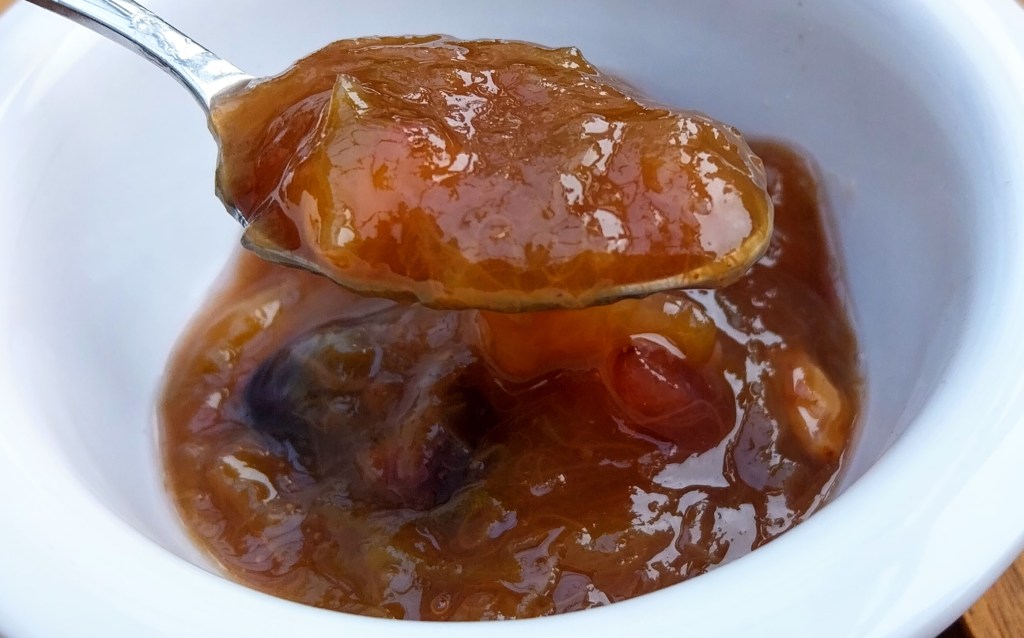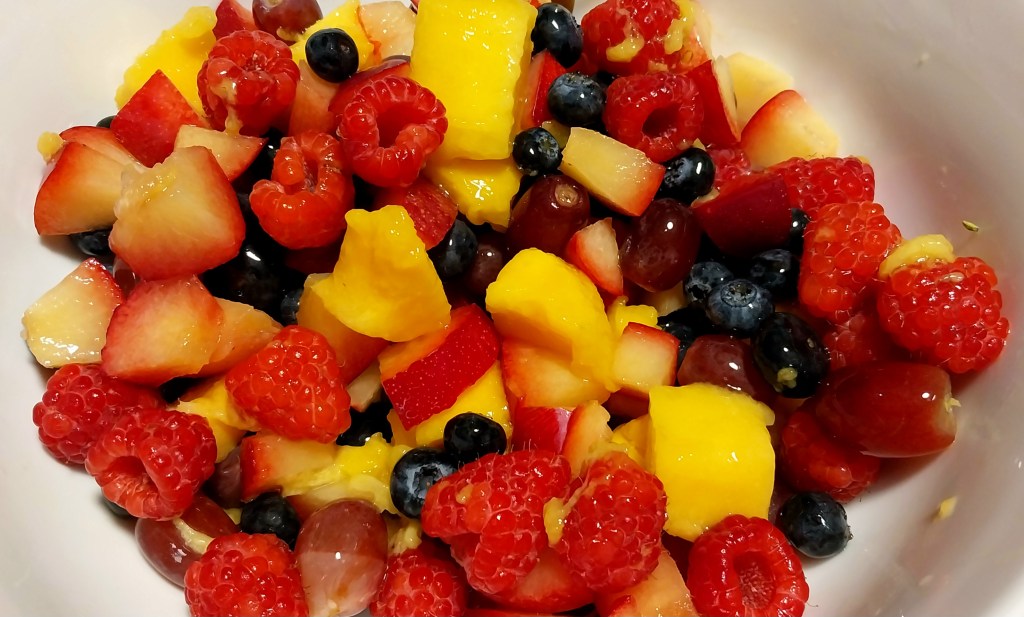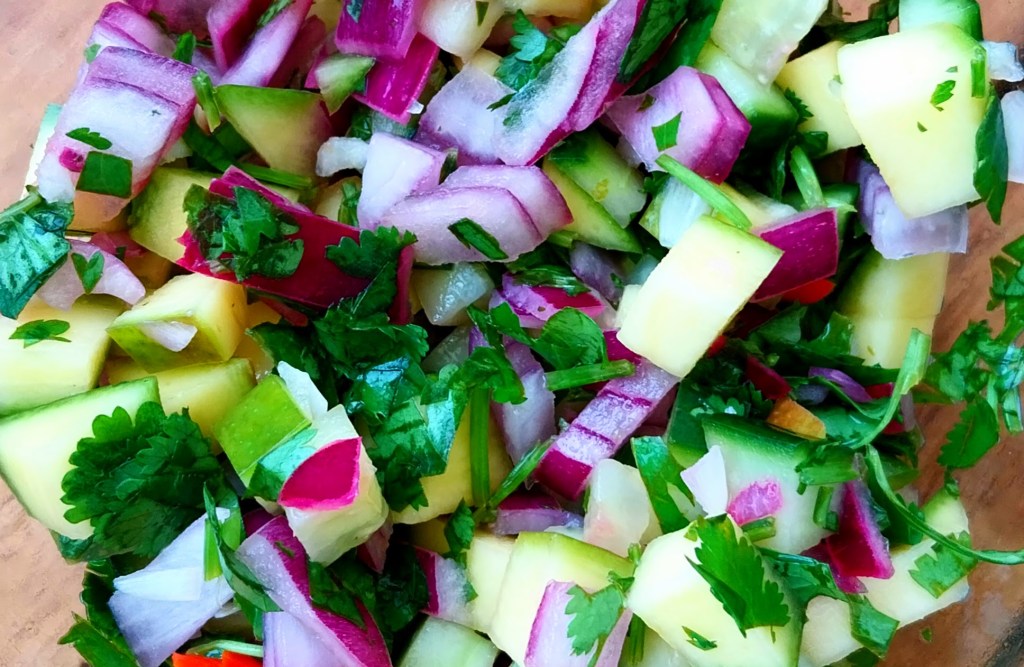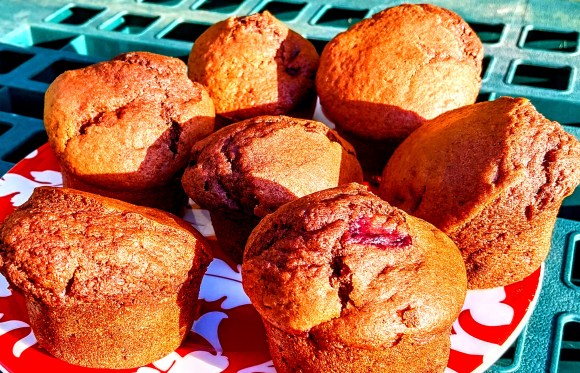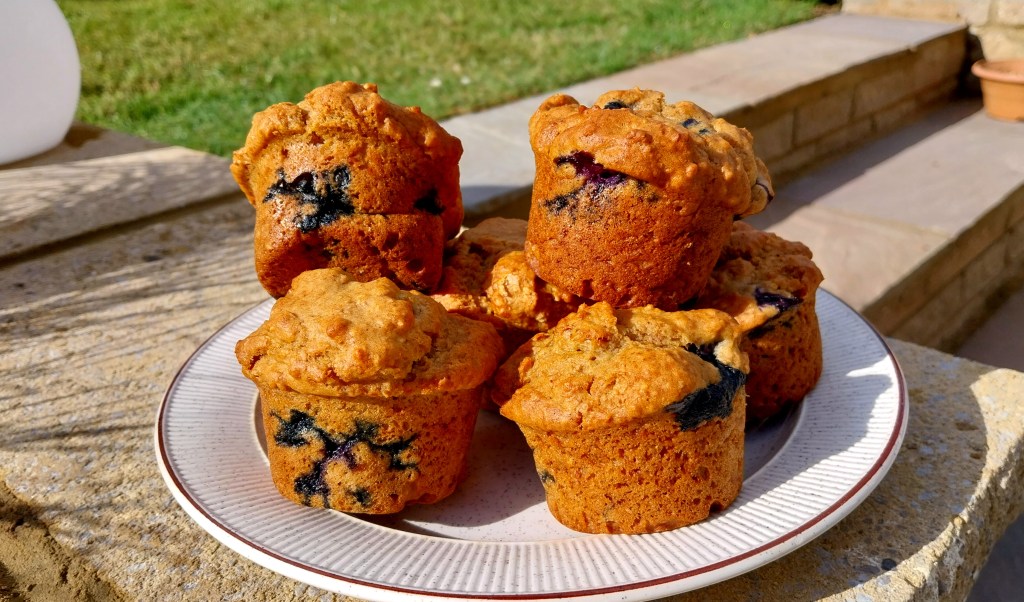
Today’s bake recipe features muffins with a healthy dose of Sicilian style.
Ricotta is used widely in Italian cuisine, for everything from pastries to pasta sauces. It is made from whey, the watery by-product of other cheeses, such as mozzarella. High in protein and calcium, it is slightly lower in fat than many other cheeses.
It adds a silkiness to the texture of this muffin mix, working well with the tartness of the lemon zest and the sweetness of the bursting berries.
Buon appetito!
Servings
Enough here for 12 generous muffins.
Timings
10 mins to prepare, 20 mins to bake in the oven at 160C.
You Will Need
- 200g plain flour
- 80g wholemeal flour
- 1 tsp baking powder
- 1 tsp bicarb of soda
- 1/2 tsp salt
- 140g fresh blueberries
- 1 egg
- 120ml milk
- 90ml veg oil
- 110g light muscovado sugar
- zest of 1 lemon
- 250g ricotta cheese
Method
- Turn the oven on to 160C. Prepare a muffin tin or mould.
- Sieve the flours, baking powder, bicarb and salt into a bowl, and stir to mix.
- Add in the blueberries and stir so they are coated in flour.
- Crack the egg into a separate bowl, and add the milk with the veg oil. Stir in the sugar, lemon zest and ricotta.
- When the oven is up to temp, pour the contents of the second bowl into the first, and stir to combine.
- Spoon the mixture into the tray or mould, and bake in the oven at 160C for 20 mins.
- Remove and leave to cool on a wire rack, before devouring.
Customise It!
Ricotta is readily available in shops, but if you can’t locate it or wish to switch it up, greek style natural yoghurt or cottage cheese could be used instead. Feel free to chuck some poppy seeds into the mix to add further visual interest, and a little extra crunch.
I’ve used a mixture of plain and wholemeal flour, as I am currently experimenting with using more wholemeal in baking. However, you can use all plain flour if you wish. I’m also trying to use muscovado more in baking, but you can use caster sugar if that’s what you have available.
I have no doubt that Paul Weller and Mick Talbot would approve of a little Italian style, so let’s add this track to the ADK Playlist: The Style Council with Shout to the Top.
